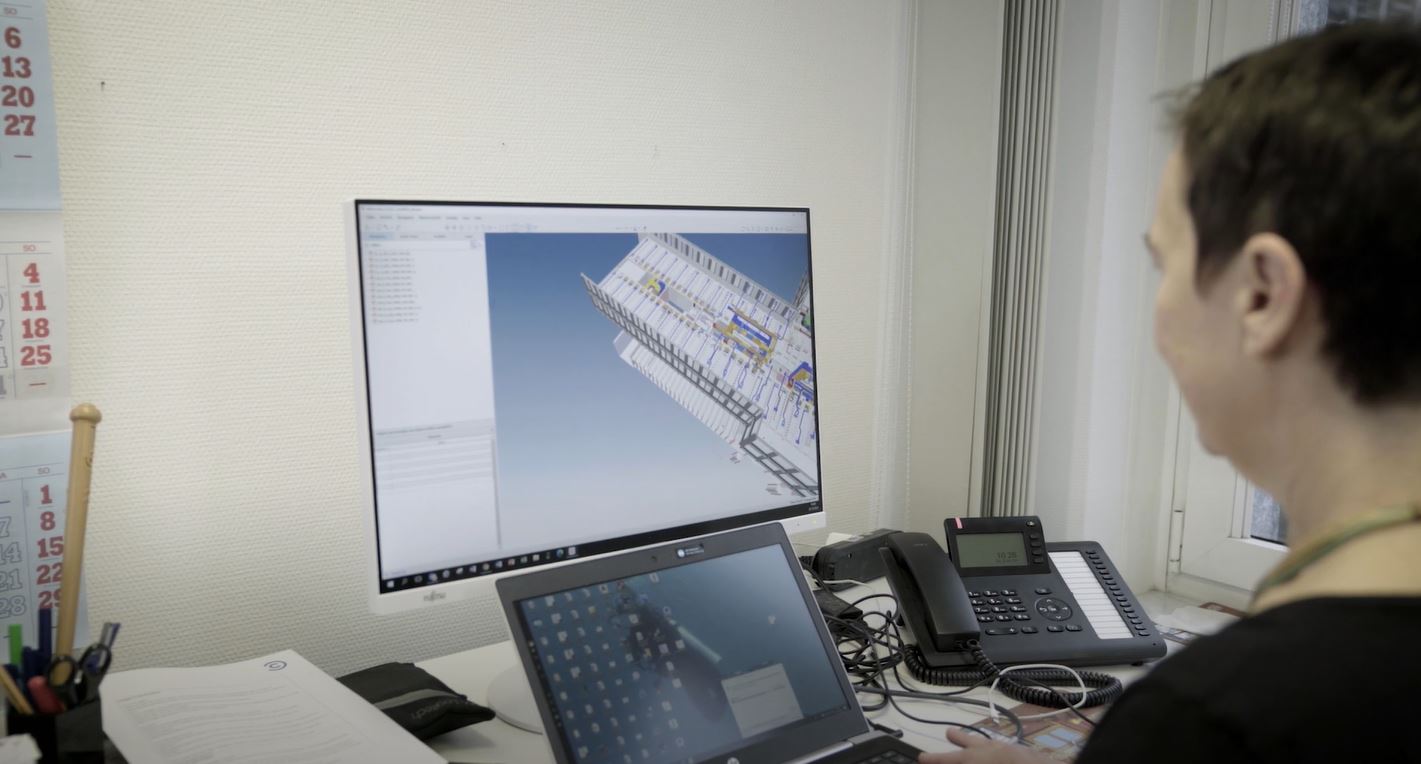
BIM at work – the DIN BIM Cloud
The standardization of interfaces, data structures, classification systems and the like through standards and regulations is indispensable for the success of an open BIM (Building Information Modelling) method . But with regard to the "I" in BIM, i.e. the information to be exchanged, standardization can also help significantly simplify and accelerate processes.
Depending on the necessary depth of information, the objects in a BIM model need to be provided with meaningful and unique features and attributes so that a pure 3D building model can become a BIM data model. The same features and attributes need to be regularly entered and are required by the parties involved in connection with objects or components that are frequently used in construction or that are already present in buildings, for example a masonry wall made of vertically perforated bricks.
DIN made the DIN BIM Cloud platform available at the end of 2019 (at present, in German only), a database with freely available standardized features and attributes for adoption in BIM models. With the help of this platform, those who enrich data models with relevant information in corresponding projects do not have to decide each time how features and/or attributes have to be designated so that they are unambiguous and so that all those involved understand the information in the same sense; they can use the data contained in the DIN BIM Cloud and work with it. In addition, the platform makes it possible to enter into a dialogue with DIN if existing data is not complete or is technically insufficient from the user's point of view, and also if often necessary information is simply missing.
Standardization of features and attributes - a reality at DIN for many years now
But where does the data come from and what does DIN have to do with this topic? The electronic exchange of data is indeed a topic that has been at home at DIN in the Standards Committee Building and Civil Engineering (NABau) for more than 20 years, because DIN, together with the committees of GAEB, has been creating model performance texts for tenders that meet the requirements of public construction contracting since 1996. The abbreviation GAEB stands for "Gemeinsamer Ausschuss für Elektronik im Bauwesen" (Joint Committee for Electronics in Construction) which is one of 4 main committees in the Deutscher Vergabe- und Vertragsausschuss für Bauleistungen (DVA) (German Contract Awards and Contract Committee for Construction Services), who is also responsible for the creation and maintenance of the German Construction Contract Procedures (VOB).
The model performance texts are made available to the public with the digital product STLB-Bau and can be integrated and used via an interface in software programs for tendering, awarding and invoicing. The text systematic of STLB-Bau has always worked with features and attributes, and so making the system usable for BIM value chains was a logical step.
This step was practically implemented in the DIN BIM Cloud. The model performance texts from STLB-Bau serve as the data basis for the Cloud. The application of DIN SPEC 91400 "BIM classification according to STLB-Bau" enables the use of these texts for BIM models. Building on the basis of high-quality and very extensive component data, various use cases not previously covered can be supplemented and mapped in the DIN BIM Cloud in the future.

In a way, BIM has already been "foreseen" in the text structure of STLB-Bau for the tendering application case. In fact, DIN has gathered expertise in standardizing features and attributes for almost 20 years.
At DIN, we see the DIN BIM Cloud as an active contribution to establishing the BIM methodology in the construction industry. We look forward to engaging in discussions with stakeholders, benefiting from each other and moving forward in a common direction.
Author:
Andreas Frisch, Team Coordinator for GAEB/VOB in DIN Standards Committee Building and Civil Engineering (NABau) and contact partner for the DIN BIM Cloud.
Using the DIN BIM Cloud
